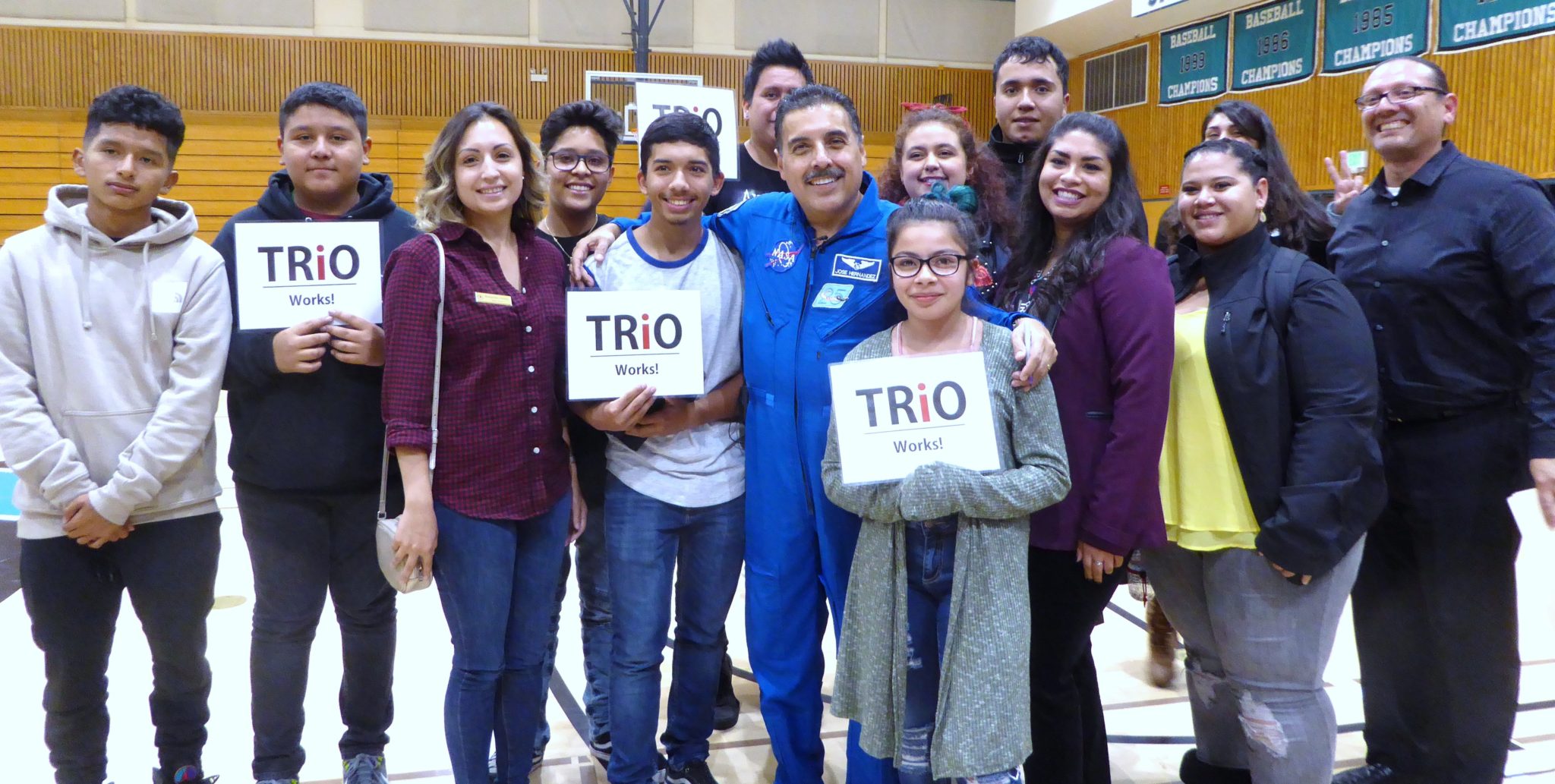

The twelfth time he applied to the National Aeronautics and Space Administration (NASA) to become an astronaut was the charm for California native José M. Hernández. His written application had been rejected 11 previous times. Nonetheless, he persevered, applying yet one more time and was selected out of 14,000 applicants as one of 100 finalists to be interviewed.
But this first acceptance ended in rejection. In fact, he was selected as a finalist, interviewed, put through a battery of tests and rejected twice. Until at long, long last, in May of 2004, the third time he was interviewed, Hernández was chosen by NASA to be one of 15 candidates in the 19th class of astronauts. Five years later, on August 28, 2009, he had the best of seven seats—in front of the window—as a flight engineer on the Space Shuttle Discovery, heading for the International Space Station.
Hernández was the keynote speaker to launch Science, Technology, Engineering and Math (STEM) Week on Oct. 30 at Mission College, Santa Clara. He spoke to more than 500 attendees, who crowded the bleachers in the campus gym. He shared the story of his life, of how the youngest child of migrant laborers from Michoacán, Mexico, never gave up the impossible dream of becoming an American astronaut.
“I’m so proud we were able to host José Hernández,” said Mission College President Daniel Peck. “He represents our students and shows that anything is possible. His story is truly inspirational.”
Hernández spent almost 14 days in space on Space Shuttle Mission STS-128, returning to earth on Sept. 11, 2009. The aircraft, essentially a glider at that point, touched down at Edwards Air Force Base in California. It landed not far from the strawberry fields where Hernández’s family had worked before settling in Stockton.
In Stockton, Hernández was at last able to attend one school without having to move every two or three months to follow the crops. There, he was first inspired to become an astronaut when he was 10-years-old and saw the Apollo 17 moon walk on television.
“That’s when it hit me: ‘That’s what I want to be—an astronaut,'” said Hernández, who credits his dad with teaching him five steps to reach his goal: Define your goal, recognize how far along you are, draw a roadmap, get the necessary education and training, and work hard, always giving more than people expect.
“And persevere,” added Hernández.
He talked about three stages in reaching a goal: Meet the minimum requirements, compare yourself to successful people to determine what they have that you don’t and distinguish yourself from the competition. For Hernández, this meant becoming a pilot and a scuba diver, studying Russian and accepting a work assignment in Russia before he was finally chosen for astronaut training.
While working at the Lawrence Livermore National Laboratory from 1980 to 2004, his work contributed to a new tool for early breast cancer detection. In 2012, he published the book “Reaching for the Stars: The Inspiring Story of a Migrant Farmworker Turned Astronaut.” He established the José M. Hernández Reaching for the Stars Foundation (astrojh.org).
“Dream very big and be willing to put in the work,” Hernández told his Mission College audience.
Santa Clara resident Kishore Kamath was in line with his eight-year-old son, Kedar, waiting for a photo opportunity with Hernández.
“This represents the Valley—the hard work and perseverance, coming up through all the struggles as immigrants. It gives hope to others. It’s something we can all relate to, especially for parents. You can support your children’s dreams,” said Kamath.
“He’s a very good speaker. It was totally engrossing. More important was his points to achieve your dream,” said Kamath. “Perseverance is missing. That’s why people lose.”
With the World Cup and Super Bowl coming to Santa Clara’s Levi’s Stadium next year,…
Rest vs rust; it’s a classic sports debate. When there is a break in the…
Right or wrong, agree or disagree, common sense or no sense, if your thinking matches up…
Friday afternoon’s baseball matchup between the Wilcox Chargers and Milpitas Trojans was pretty much decided…
Super Bowl preparations are coming together, with the city manager saying the final agreements will…
It was March 2020, and the world was spinning in a direction no one expected…